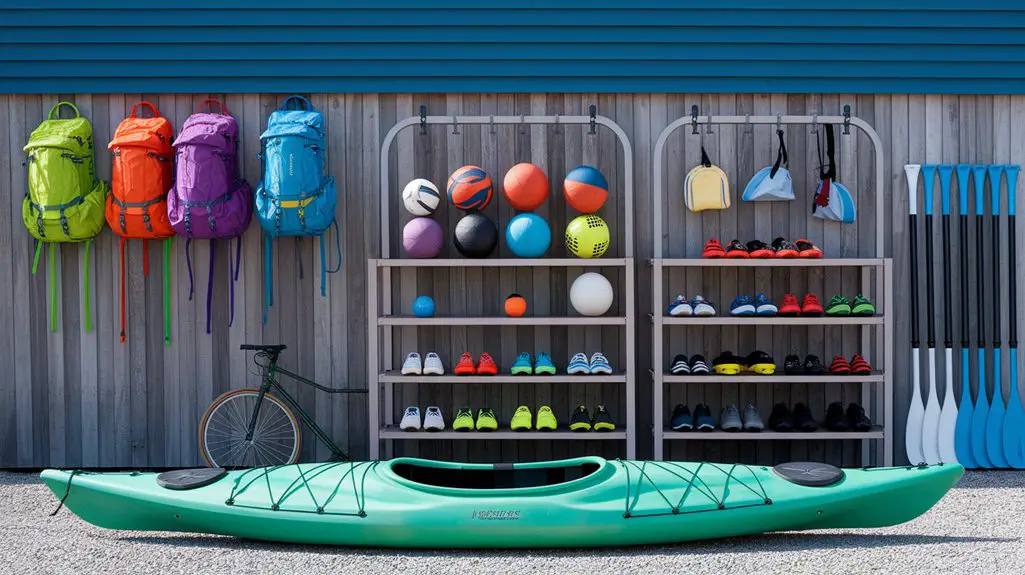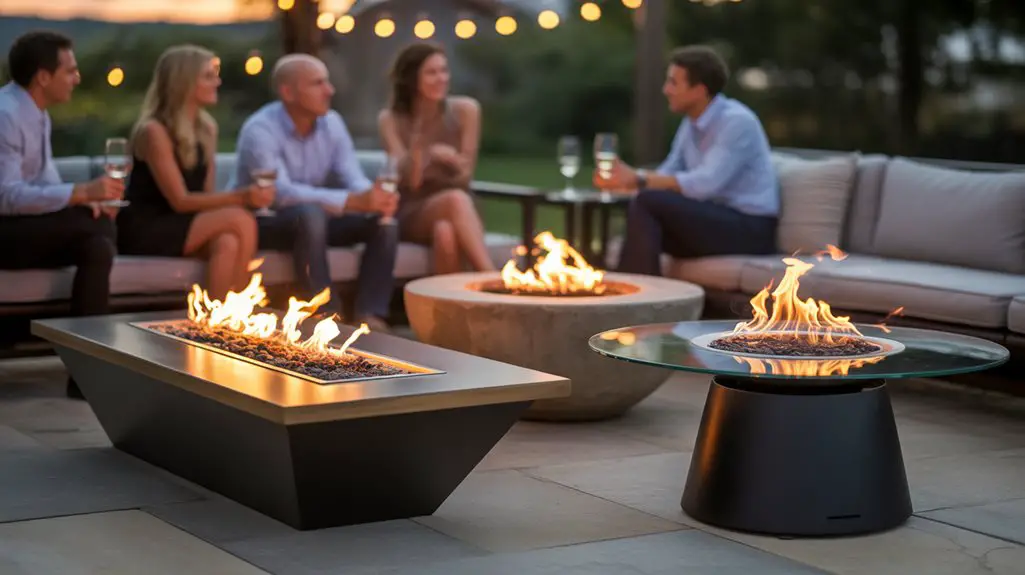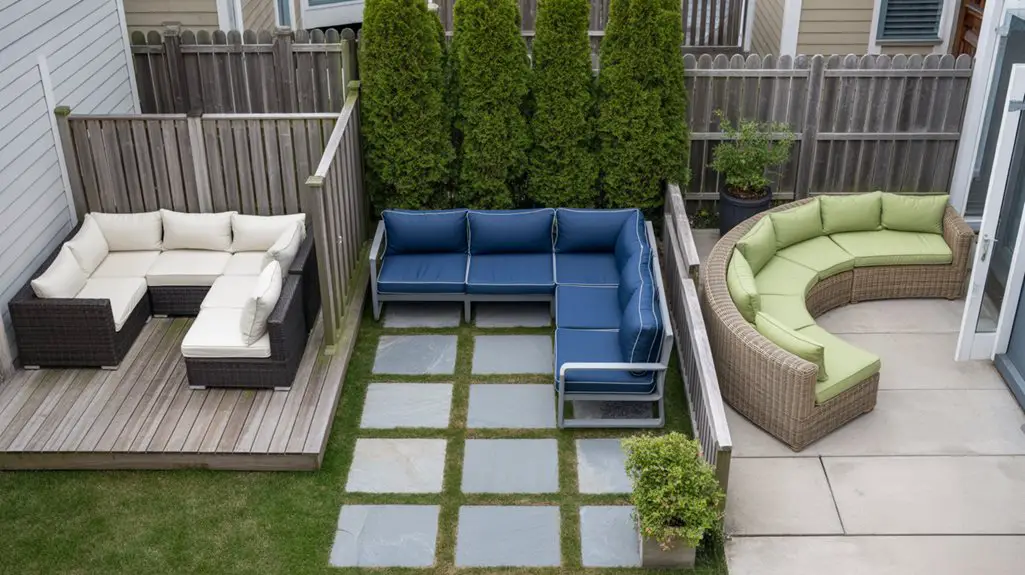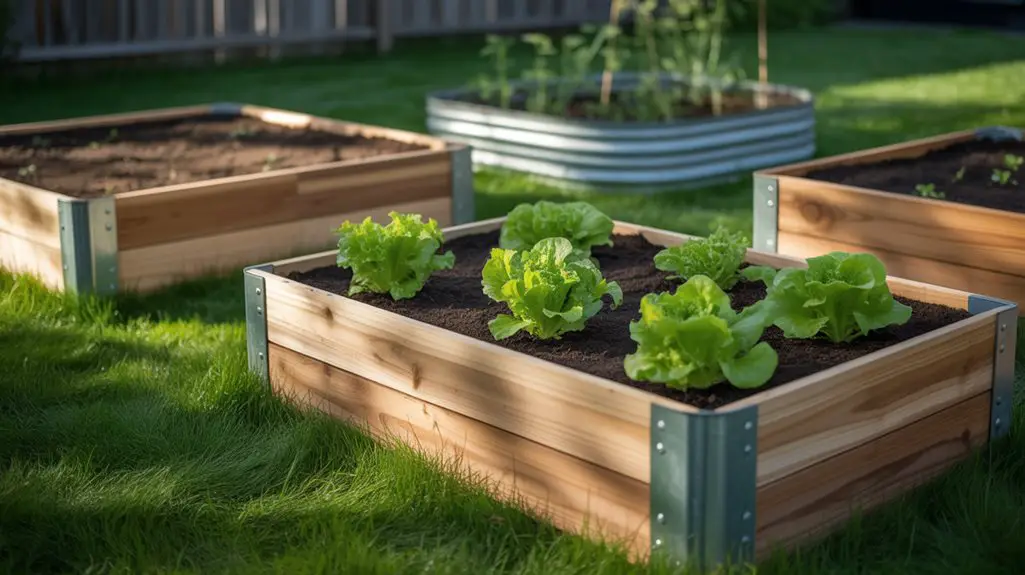Your outdoor gear collection probably resembles a small sporting goods store at this point. Every season brings new equipment while old favorites pile up in corners, closets, and any available space. This chaos doesn’t just waste valuable storage area—it costs you time and frustration when you can’t find what you need for spontaneous adventures. Proper organization systems can transform this jumble into an efficient setup that makes your active lifestyle considerably more enjoyable and sustainable.
Assess Your Gear Collection and Prioritize by Season
Before tackling any outdoor sports gear organization project, you’ll need to gather and evaluate everything you own.
Empty closets, bins, and storage areas to create a complete inventory. This reveals duplicates, damaged items, and forgotten equipment that’s consuming valuable space.
Sort gear into seasonal categories—winter (skiing, snowboarding), summer (swimming, hiking), spring (cycling, climbing), and fall (hunting, camping).
This classification system guarantees current-season equipment remains accessible while off-season gear gets stored away.
Be ruthless during assessment. If you haven’t used an item in two seasons, consider selling or donating it.
Repair serviceable equipment immediately rather than storing damaged items.
Photograph your inventory and create a simple spreadsheet tracking condition, location, and replacement dates for high-value equipment.
Install Weather-Resistant Wall Storage Systems

Wall storage systems offer the perfect next step after you’ve assessed and categorized your outdoor equipment.
Choose weather-resistant materials like powder-coated steel or marine-grade aluminum that won’t rust or deteriorate when exposed to humidity or temperature fluctuations.
Install adjustable track systems with specialized hooks for specific gear: J-hooks for bikes, curved holders for paddles, and horizontal racks for skis.
Position frequently used items at eye level, and mount less-used seasonal equipment higher up. Leave 6-8 inches of clearance between items to prevent damage.
For garages or semi-outdoor spaces, add protective covering panels that shield gear from dust and UV exposure.
Seal all mounting hardware with silicone to prevent moisture infiltration.
Remember to follow weight limits—distribute heavy items across multiple mounting points for maximum wall integrity.
Create Designated Equipment Zones by Sport

Once you’ve installed your wall storage system, establishing designated zones for different sports will dramatically improve efficiency and accessibility.
Divide your storage area into distinct sections based on activity—cycling equipment in one zone, water sports in another, and hiking or camping gear in a third.
Label each zone clearly with metal or waterproof tags. Within zones, prioritize equipment by frequency of use, keeping seasonal items easily accessible during their prime seasons.
For multi-sport families, assign color-coded bins or hooks to each family member within their sport zones.
Consider creating a shift area between zones for versatile equipment that crosses categories. This methodical organization system prevents the frustration of searching for missing gear and simplifies both pre-activity preparation and post-activity storage, ultimately extending the lifespan of your valuable outdoor equipment.
Build Multi-Purpose Storage Benches and Containers
Multi-purpose storage benches represent a strategic investment for outdoor sports enthusiasts who need to maximize limited garage or shed space.
These dual-function containers serve as seating areas while concealing equipment underneath in organized compartments.
Select weatherproof materials like cedar, composite wood, or marine-grade plastic to protect gear from moisture damage.
Install dividers to separate items by season or sport type. For maximum efficiency, add labeled bins within the bench to sort smaller accessories—gloves, balls, and repair kits.
Consider installing wheeled storage benches near garage entrances for equipment that’s frequently used.
For pool or beach equipment, prioritize ventilated designs that allow wet items to dry.
Mount hooks on the sides of benches for hanging oddly shaped items like paddles or tennis rackets that don’t fit well in enclosed spaces. Additionally, stylish backyard storage solutions can enhance the aesthetic appeal of your outdoor area while keeping it organized.
Utilize Vertical Space With Hanging and Stacking Solutions
The vertical dimension of your garage or shed offers untapped potential for organizing bulky outdoor sports equipment that would otherwise consume valuable floor space.
Install wall-mounted racks designed specifically for bikes, kayaks, skis, or paddleboards to elevate them safely off the ground. Ceiling-mounted pulley systems work excellently for seasonal items like canoes or surfboards.
Consider grid wall panels with adjustable hooks that you can reconfigure as your equipment collection changes. For smaller items, utilize clear stackable bins labeled by sport or season.
Wall-mounted mesh bags effectively contain basketballs, soccer balls, and volleyballs while allowing airflow.
Don’t overlook door space—specialized over-the-door organizers can hold helmets, cleats, or baseball gloves.
When installing any hanging system, verify it’s anchored securely into studs to support your equipment’s weight safely.
Conclusion
By implementing these five strategies, you’ll transform your outdoor gear chaos into a functional storage system. Keep seasonal rotations consistent, and you’ll never waste time searching for equipment again. When every item has a proper home, you’re hitting the ground running for any adventure. Maximizing vertical space while creating sport-specific zones guarantees your gear stays organized, protected, and ready whenever outdoor activities call.




